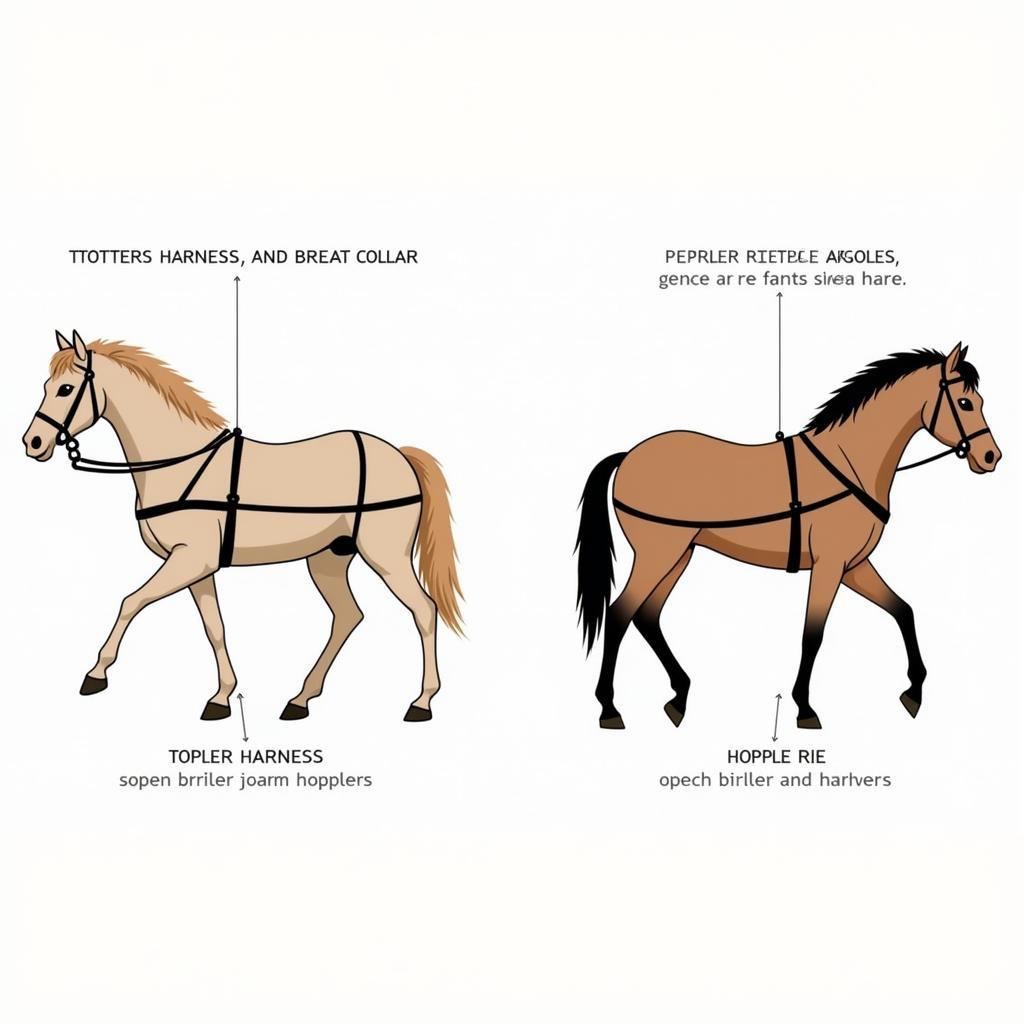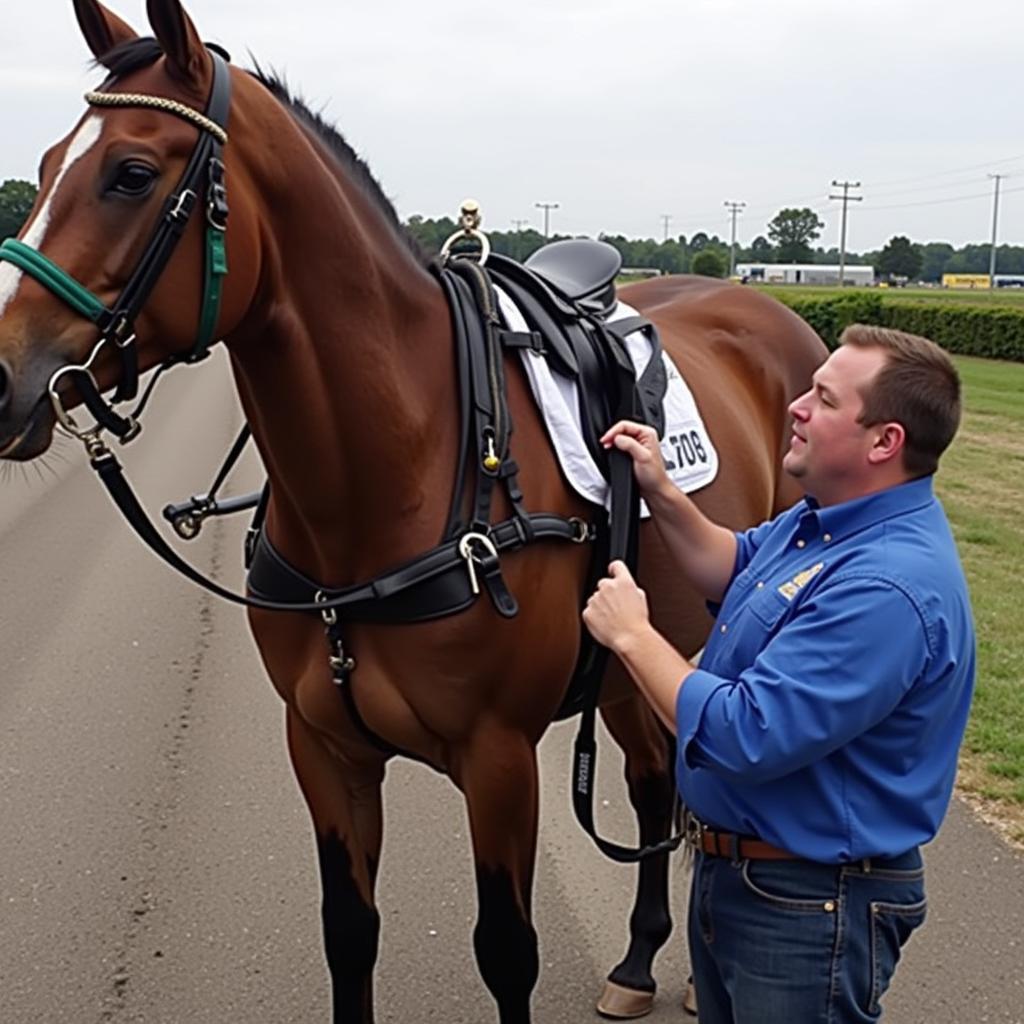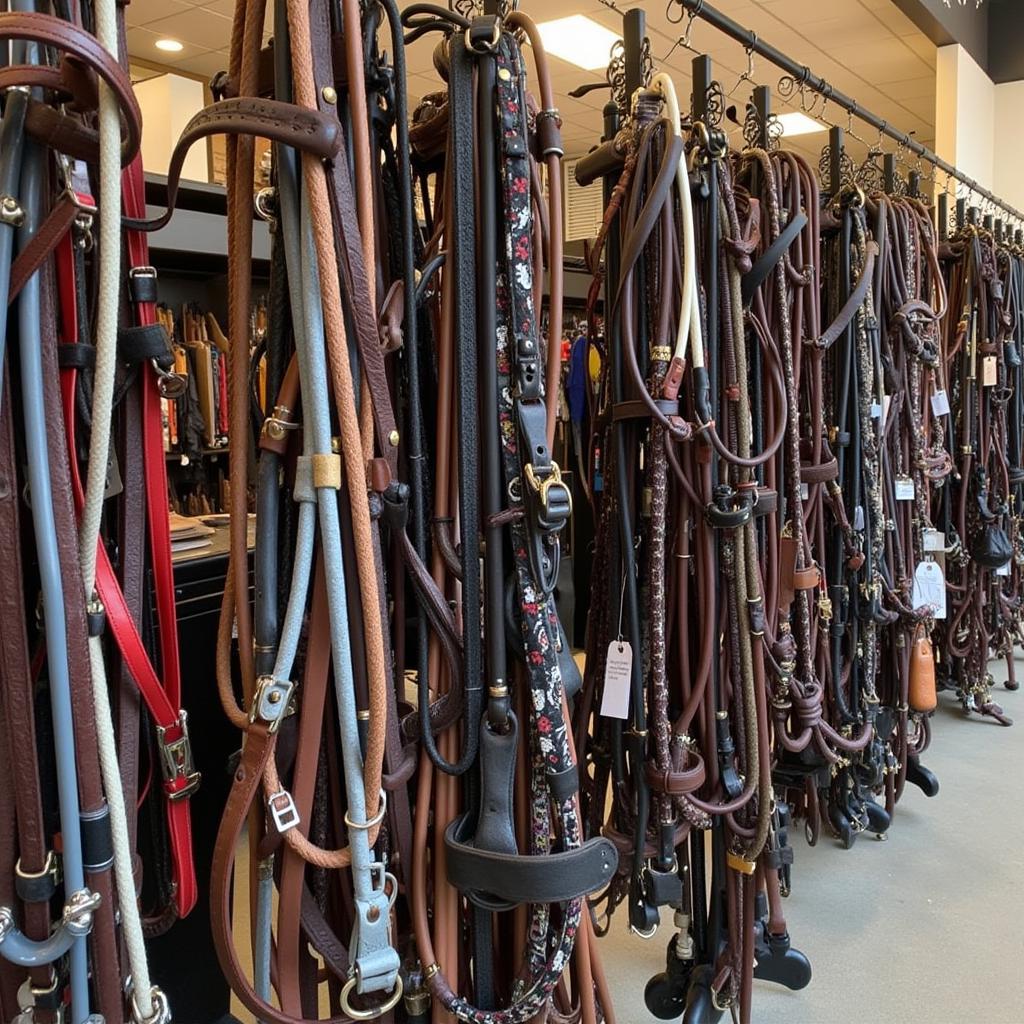A Race Horse Harness is a crucial piece of equipment, impacting both the horse’s performance and safety. Understanding the different types, proper fit, and maintenance is essential for any horse owner or racing enthusiast. This guide will delve into everything you need to know about race horse harnesses. horse and harness
A well-fitted race horse harness allows for optimal power transfer from the horse to the sulky or cart, maximizing speed and efficiency. Different racing disciplines often utilize specialized harness designs, so choosing the right one is paramount.
Types of Race Horse Harnesses
Race horse harnesses come in various designs, each catered to specific racing disciplines. Understanding these differences can help you select the most appropriate harness for your horse and racing style.
Trotters vs. Pacers
-
Trotter Harnesses: These harnesses are designed to encourage a diagonal gait, where the horse moves the opposite front and back legs simultaneously. They typically feature a breast collar and a more open bridle to allow for greater head movement.
-
Pacer Harnesses: Pacers move the legs on the same side of their body together. Pacer harnesses include hopples, straps that connect the legs on the same side, helping to maintain this gait. The harness design also incorporates a closed bridle and a check rein, which discourages breaking into a trot.
 Race Horse Harness Types: Trotters vs Pacers
Race Horse Harness Types: Trotters vs Pacers
Harness Components and Their Functions
Each component of a race horse harness plays a vital role in its function and the horse’s performance.
- Bridle: Controls the horse’s head and direction.
- Breast Collar: Prevents the harness from slipping back.
- Traces: Connect the harness to the sulky or cart, transferring power.
- Backstrap: Supports the traces and distributes weight.
- Belly Band: Keeps the harness secure.
- Shaft Loops (for carts): Attach the harness to the shafts of a cart.
- Hopples (for pacers): Maintain the pacing gait.
- Check Rein (for pacers): Discourages breaking into a trot.
Fitting a Race Horse Harness
horse team harness diagram A properly fitted harness is crucial for the horse’s comfort and performance. A poorly fitting harness can cause sores, restrict movement, and even lead to injury.
-
Professional Fitting: Consulting a professional harness fitter is highly recommended, especially for new horses or those transitioning to a different racing discipline.
-
Adjustability: Ensure the harness is adjustable in all key areas to accommodate the horse’s conformation and growth.
-
Check for Chafing: After fitting, regularly check for any signs of rubbing or chafing, particularly around the shoulders, chest, and back.
 Properly Fitting a Race Horse Harness
Properly Fitting a Race Horse Harness
Maintaining Your Race Horse Harness
Proper maintenance will extend the life of your harness and ensure it continues to perform safely and effectively.
-
Regular Cleaning: Clean the harness regularly with saddle soap and water to remove dirt and sweat.
-
Conditioning: Conditioning the leather will keep it supple and prevent cracking.
-
Inspection: Regularly inspect the harness for any signs of wear and tear, such as frayed stitching or cracked leather. Replace any damaged parts immediately.
-
Storage: Store the harness in a cool, dry place away from direct sunlight.
“Regular harness maintenance is just as important as regular veterinary checkups. A well-maintained harness is a safe harness,” advises Dr. Emily Carter, DVM, specializing in equine sports medicine.
How to Choose the Right Harness for Your Race Horse
antique horse hitch Selecting the right race horse harness involves considering several factors:
-
Racing Discipline: Trotters and pacers require different harness designs.
-
Horse’s Conformation: The harness should fit the horse’s individual body shape and size.
-
Material and Quality: Opt for high-quality leather or synthetic materials that are durable and comfortable.
-
Budget: Harnesses range in price, so consider your budget when making a selection.
“Choosing the correct race horse harness is an investment in your horse’s performance and well-being,” adds renowned harness maker, John Miller.
 Selecting the Right Race Horse Harness
Selecting the Right Race Horse Harness
Conclusion
Choosing the right race horse harness is an essential aspect of equine racing. Understanding the various types, fitting procedures, and maintenance requirements can significantly impact your horse’s performance and safety. By considering these factors and consulting with professionals, you can ensure your horse has the best possible equipment for a successful and safe racing career. Remember, a well-fitted and maintained race horse harness is a key investment in your horse’s success. cat horse costume single tree horse
FAQ
- What is the difference between a trotter harness and a pacer harness?
- How often should I clean my race horse harness?
- What are the signs of a poorly fitting harness?
- Where can I find a professional harness fitter?
- How much does a race horse harness typically cost?
- What materials are race horse harnesses made from?
- How do I store my race horse harness properly?
When you need assistance, please contact us by phone: 0772127271, email: [email protected] or visit our address: QGM2+WX2, Vị Trung, Vị Thuỷ, Hậu Giang, Việt Nam. We have a 24/7 customer service team.